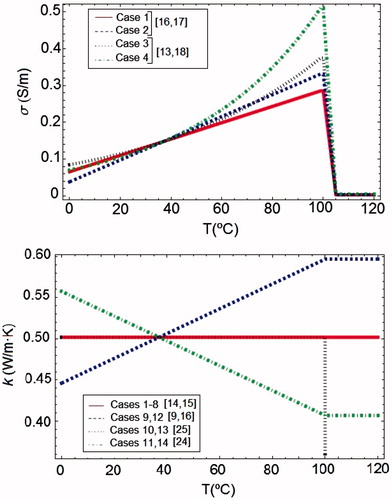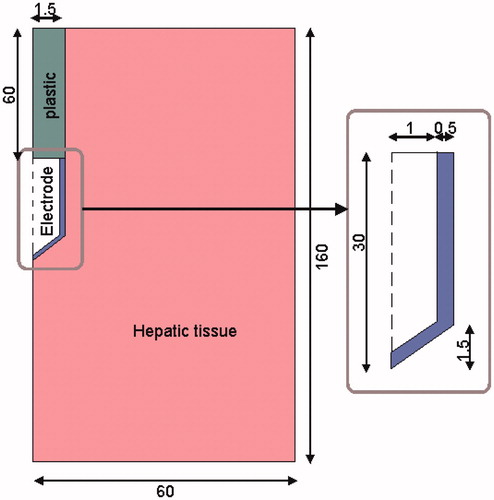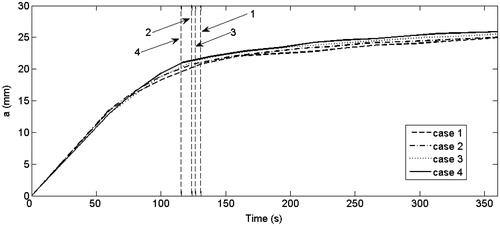Figures & data
Table I. Studied cases according to the different mathematical functions used to model the temperature dependence of electrical (σ) and thermal (k) conductivities.
Figure 1. Representation of the functions used for modelling the thermal dependence of σ and k. In the case of σ was showed only a two order drop for T > 105 °C. Legends specify some references in which these kinds of functions of σ and k are used.

Figure 2. Geometry of the two-dimensional theoretical model (out of scale and dimensions in mm) and electrode detail. The domain is divided into three zones: plastic portion of the electrode, metallic electrode and hepatic tissue.

Table II. Characteristics of the materials used in the theoretical model [Citation12,Citation19,Citation29,Citation30].
Figure 3. (A) Impedance evolution to the first roll-off in cases 1 to 4. (B) Impedance evolution to the first roll-off in cases 1, 4, 5 and 8. The only characteristic which varies in both figures is σ, in accordance with .

Figure 4. (A) Impedance evolution in cases 1, 9, 10 and 11. (B) Impedance evolution in cases 4, 12, 13 and 14. A different mathematical function for k was used in each case, in accordance with .

Figure 5. Evolution of the lesion short diameter (a) throughout 360 s for cases 1 to 4 (see for details). Dashed lines represent the time in which the first roll-off was achieved in each case.

Figure 6. Two-dimensional tissue temperature distribution during RFA and impedance evolution. The impedance progress can be divided into three intervals: 1) initial impedance drop; 2) impedance plateau; and 3) abrupt increase of impedance. These zones are related to the physical conditions of the tissue during the RFA process [Citation30].
![Figure 6. Two-dimensional tissue temperature distribution during RFA and impedance evolution. The impedance progress can be divided into three intervals: 1) initial impedance drop; 2) impedance plateau; and 3) abrupt increase of impedance. These zones are related to the physical conditions of the tissue during the RFA process [Citation30].](/cms/asset/ee0fe7e5-d5f7-454c-af30-0d0f98a9928c/ihyt_a_807438_f0006_b.jpg)